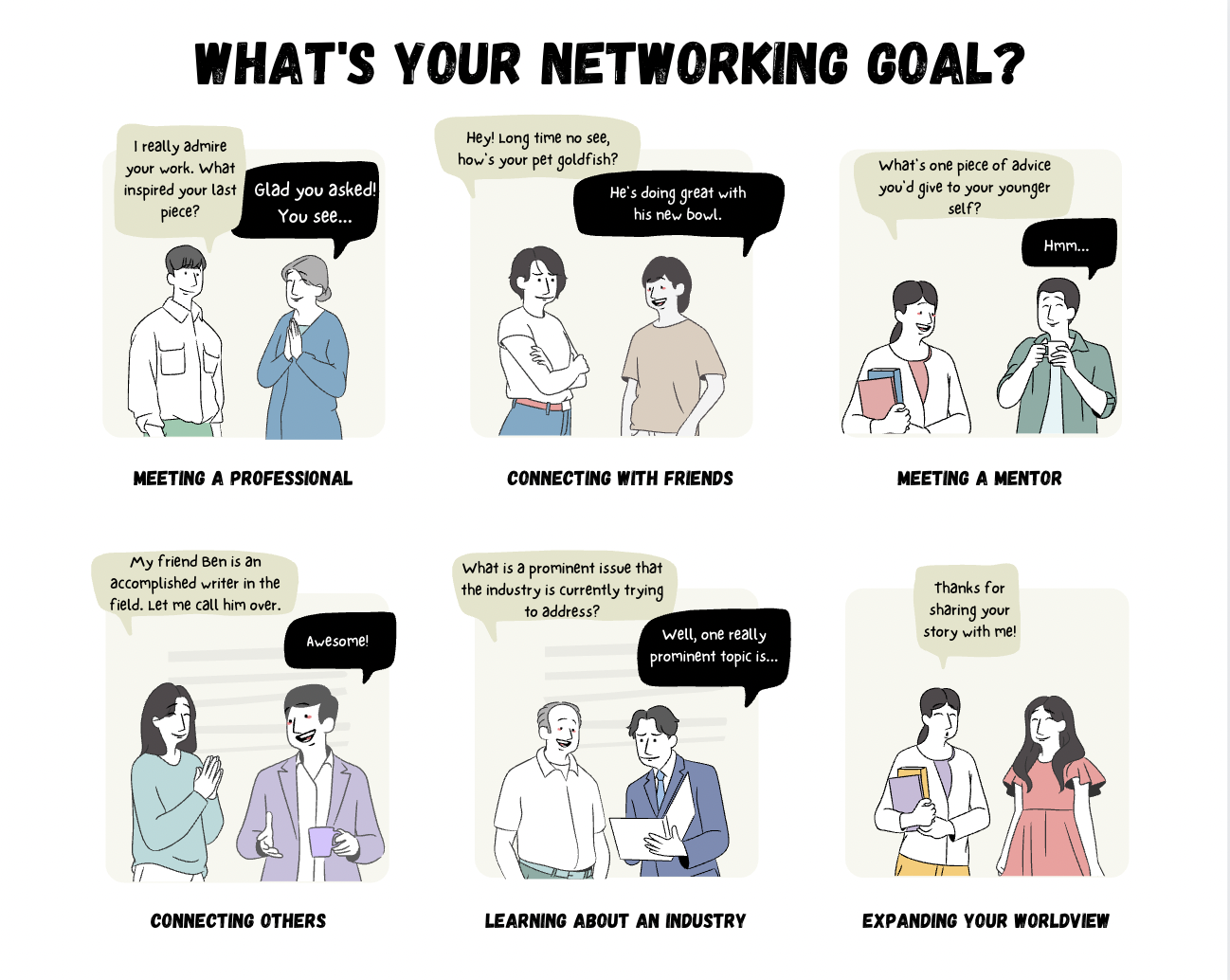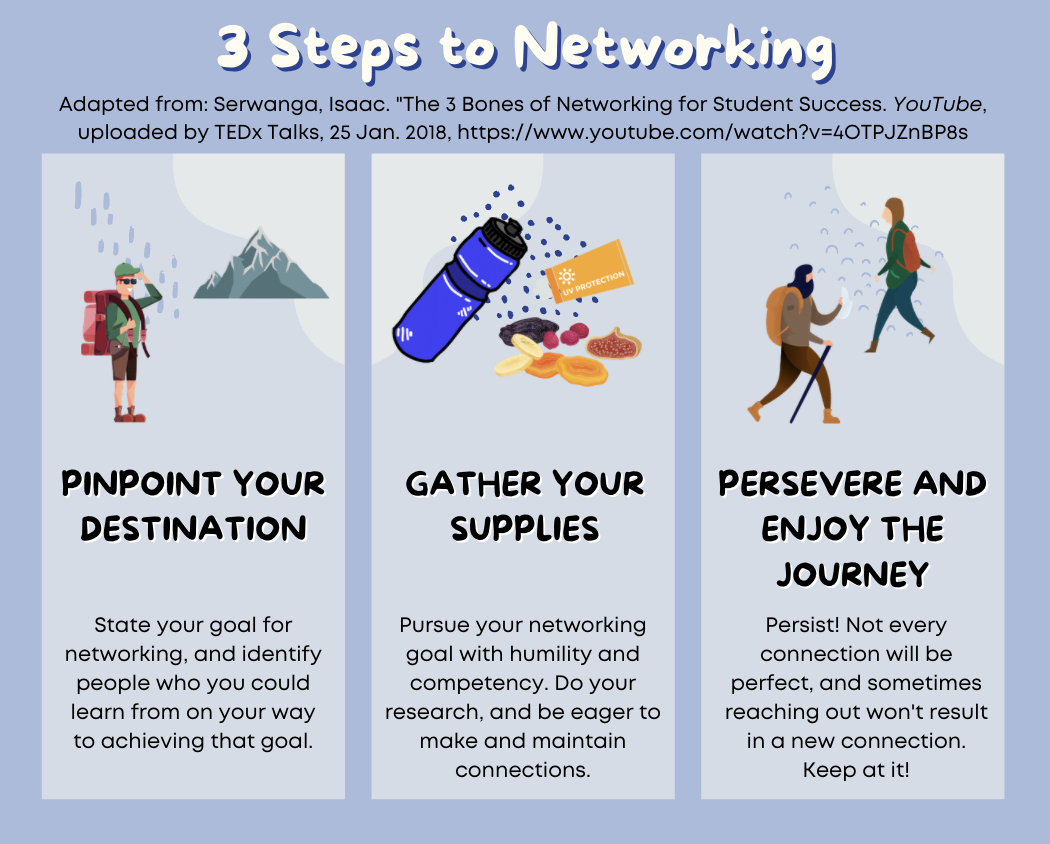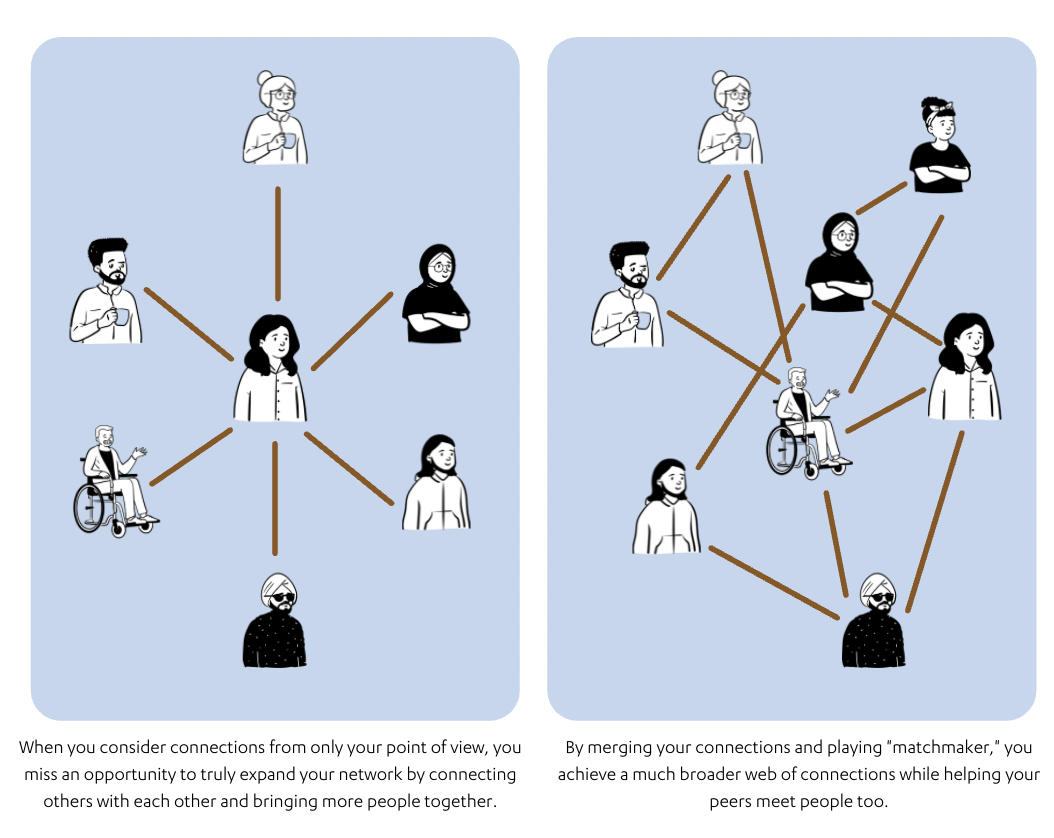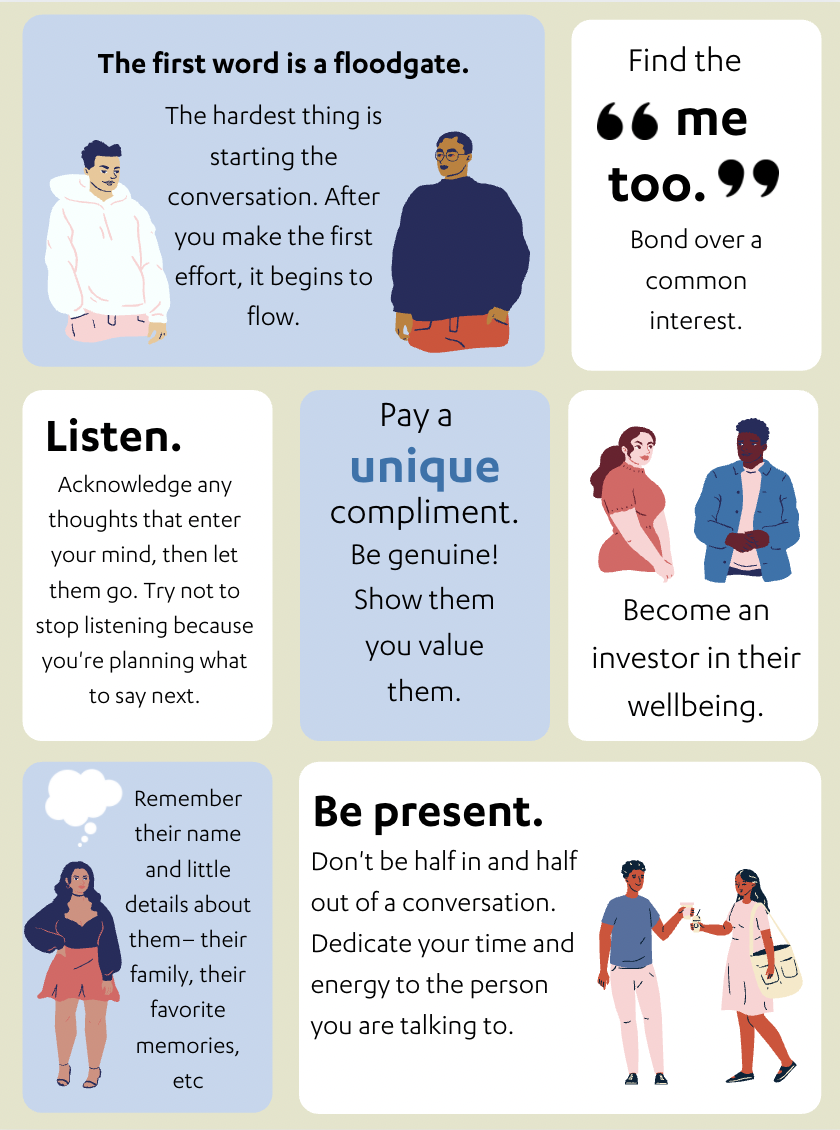People are always talking about how important it is to network. But what is networking? Perhaps the more important question is: what is networking not?
Networking is not using people. It is not strictly transactional. And it is not something you can only do at networking events.
Networking can be a lot of different things! Before we begin, it’s important to identify your goals for networking. Your goals could include any of the things below and more.
What's Your Networking Goal?
Meeting a professional.
Person 1: "I really admire your work. What inspired your last piece?"
Person 2: "Glad you asked! You see..."
Connecting with friends.
Person 1: "Hey! Long time no see, how's your pet goldfish?"
Person 2: "He's doing great with his new bowl."
Meeting a mentor.
Person 1: "What's one piece of advice you'd give to your younger self?"
Person 2: "Hmm..."
Connecting others.
Person 1: "My friend Ben is an accomplished writer in the field. Let me call him over."
Person 2: "Awesome!"
Connecting others.
Person 1: "My friend Ben is an accomplished writer in the field. Let me call him over."
Person 2: "Awesome!"
Learning about an industry.
Person 1: "What is a prominent issue that the industry is currently trying to address?"
Person 2: "Well, one really prominent topic is...!"
Expanding your worldview.
Person 1: "Thanks for sharing your story with me!"
(If you're a student who is looking to establish connections with peers and mentors and expand your network of research and job opportunities, here is a quick tutorial that will help you create an academic goal that can guide your networking experience.)
The Where, Who, and Why of Networking
Strategies for Networking
Networking can seem like a big and overwhelming process, so here are 3 steps to help you break it down into smaller chunks. Just like a hike or excursion, networking is a journey. Don’t stress about getting a certain amount of networking done in a specific amount of time, but look at it as an ongoing way of life that you keep adding to as time passes.
3 Steps to Networking
Adapted from: Serwanga, Isaac. "The 3 Bones of Networking for Student Success. Youtube, uploaded by TEDx Talks, 25 Jan. 2018, https://www.youtube.com/watch?v=4OTPJZnBP8s
Pinpoint Your Destination
State your goal for networking, and identify people who you could learn from on your way to achieving your goal.
Gather Your Supply
Pursue your networking goal with humility and competency. Do your research, and be eager to make and maintain connections.
Persevere and Enjoy the Journey
Persist! Not every connection will be perfect, and sometimes reaching out won't result in a new connection. Keep at it!
Preparing for Networking Events
People go to networking events with the express purpose of meeting new people and making friends, so don’t be afraid to put yourself out there a bit! Set a realistic goal of how many people you want to talk to, but go with the flow if you find that you would rather talk to one or two people. If you know who you might be running into, it doesn’t hurt to do research on them.
Ready to network? Click and hold anywhere on the image and drag your mouse (or use your arrow keys) to navigate around the panoramic scene. Click on the blue buttons for tips. We recommend clicking the full screen button in the top right for an immersive experience!
Image Credit: ESO (https://www.eso.org/public/images/ESO_Guesthouse_360_Marcio_Cabral_Chile_01-CC/)
The Benefits of Playing Matchmaker
We sometimes tend to have a view of networking with us at the center of a linear map. If you really want to make the most of networking, start to see yourself as not only a match for others, but also a matchmaker. If you meet someone who seems like they would get along really well with someone else you know, introduce them to each other. In doing this, you build a more widespread network that helps everyone around you, and that may help you in the long run as well. The graphic below shows what this perspective shift looks like:
When you consider connections from only your point of view, you miss an opportunity to truly expand your network by connecting others with each other and bringing more people together.
By merging your connections and playing "matchmaker," you achieve a much broader web of connections while helping your peers meet people too.
Conversing with Strangers
Here are some tips for talking to strangers! (And remember — all your best friends started as strangers.)
The first word is a floodgate. The hardest thing is starting the conversation. After you make the first effort, it begins to flow.
Find the "me too." Bond over a common interest.
Listen. Acknowledge any thoughts that enter your mind, then let them go. Try not to stop listening because you're planning what to say next.
Pay a unique compliment. Be genuine! Show them you value them.
Become an investor in their wellbeing.
Remember their name and little details about them — their family, their favorite memories, etc.
Be present. Don't be half in and half out of a conversation. Dedicate your time and energy to the person you are talking to.
Try out these strategies by talking to some strangers! Click on the blue button to start a conversation.
Image credit: ESO (https://www.eso.org/public/images/cafeteria-pano1/)
Network Regularly
You don’t have to be at a networking event to network! You can have a conversation with anyone you meet in any context — you never know who might end up being a lifelong friend. Keep an open mind, and try the interactive room below for tips on networking regularly!
Image credit: ESO (https://www.eso.org/public/images/mg_3010_3053/)
There are so many different places you can network. Here are a few ideas:
- Use a website like meetup.com
- School activities and clubs
- Local library events
- Interest events (workshops, craft fairs, cooking classes, etc.)
Networking in an Academic Setting
Every person in a university setting — including professors, teaching assistants, and peers — can be a valuable resource. Every class session is an opportunity to interact with them! Even if your goal is not to be a professor or a researcher, your fellow scholars still have a lot to offer.
Click on the all the blue icons in the classroom below to learn about different networking strategies!
Image credit: ESO (https://www.eso.org/public/images/2017_10_15_ABC_Building_Meeting_Room_360-CC/)
Networking on the Internet
Networking isn’t limited to just events and in-person interactions. A great way to build networking into your daily practice is to build an online presence using social media such as LinkedIn and Instagram.
These social media can help you:
- seek out specific people
- connect with old friends and acquaintances
- stay in touch with connections in an informal way
- meet new people through mutual connections
- become aware of professional opportunities near you
Here are some tips on using Instagram to network:
Whatever social media you choose, be aware of your digital footprint. Keep in mind that people who don’t know you use your social media profile to create an image of you in their heads. Always consider how your posts align with your professional identity and how you want your story and passions to come across through your social media content.
Related Resources
About this tutorial
Authors
Contributors
Chris Lopez, Renee Romero, Monique Tudon
Learning Outcomes
- Articulate the benefits of networking
- Identify effective strategies for networking in multiple contexts
- Identify strategies for maintaining connections with your network



